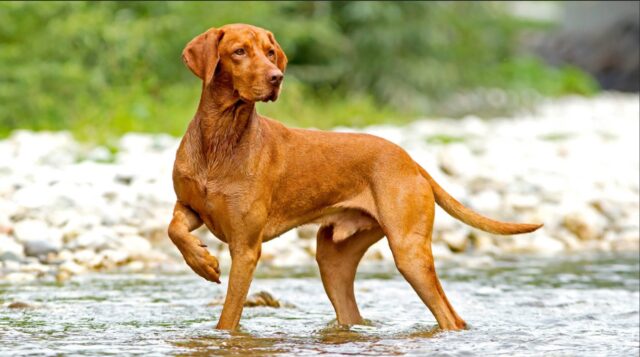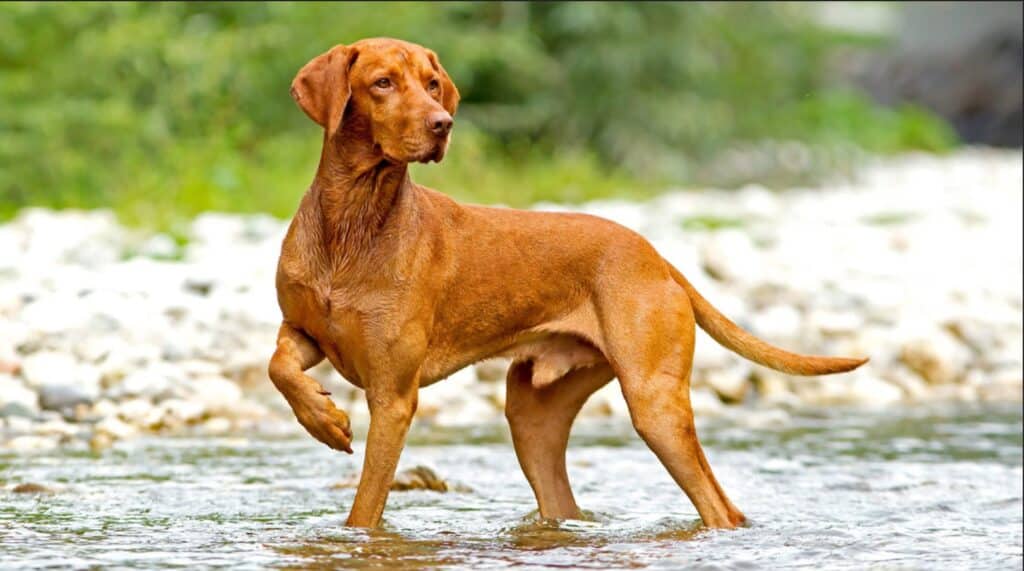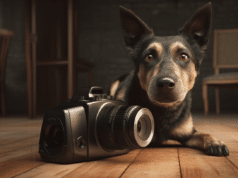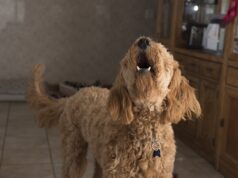
The Origins of Vizsla Dogs
Welcome as we embark on an intriguing journey to uncover the captivating history and origin of Vizsla dogs. These elegant and versatile canines have a rich heritage that spans centuries, rooted in their ancestral lands of Hungary. Join us as we delve into the fascinating stories and legends surrounding the Vizsla breed, exploring their noble lineage, their esteemed role as loyal companions, and the enduring qualities that make them truly special. Prepare to be captivated by the remarkable ancestry and deep-rooted connections that have shaped the remarkable Vizsla dogs we know and adore today.
Ancestry of Vizsla Dogs
The Vizsla breed has a long history. It can be traced back to ancient Hungary. It was highly valued by the nobility and hunters there. It has contributions from other breeds like the Turkmen Golden Dog, Transylvanian Hound and German Pointer.
For a better understanding of the Vizsla’s ancestry, we have created a table. It has the breed, country of origin and characteristics which formed this breed.
| Country | Breed | Characteristics |
|---|---|---|
| Hungary | Ancient Magyar Dog | Exceptional hunting ability |
| Turkey | Turkmen Golden Dog | Graceful build and agility |
| Transylvania | Transylvanian Hound | Keen sense of smell |
| Germany | German Pointer | Lustrous rust coat |
Vizslas are known for their hunting instincts. But, they also make great family pets because of their friendly nature and active lifestyle. Breeding of these dogs in Hungary was exclusively done for falconry sports.
First Recorded Instances of Vizsla Dogs
Vizslas are renowned hunting dogs with distinctive reddish-golden coats and an intense, high-energy demeanor. They can be traced back to Hungary in the medieval period, where they were bred and closely held by the aristocracy. Their name is believed to come from a Slavic word, “Vysla,” meaning alert or quick. Historians dispute their exact origins, but evidence suggests they’ve been bred for more than a thousand years – hunting birds and hares in forests and plains.
Sadly, during WWII, the breed nearly went extinct due to disease outbreaks and scarce resources in Hungary. However, a small number of Vizslas were exported to other countries, which helped save them from being lost forever! Nowadays, they’re still highly prized as hunters and loyal companions. So why settle for a pointer when you can have the Ferrari of the dog world – a Vizsla!
The Development of Vizsla Dogs
To understand the development of Vizsla dogs and their ancestry, delve into the early breeding of Vizsla dogs, along with changes in Vizsla dog breeding over time. Here’s a comprehensive view of the development of Vizsla dogs, including the methods, patterns, and influences that shaped the breed into what it is today.
Early Breeding of Vizsla Dogs
The Vizsla breed originated in Hungary. It was bred in the 15th century by the Hungarian nobility, who wanted a hunting dog that could work on land and in water.
Selective breeding was done to emphasize certain traits, like their great scenting skills, agility, and loyalty. This led to the modern-day Vizsla’s distinct appearance and characteristics.
Here are some details about the Vizsla dog:
- Country of Origin: Hungary
- Purpose: Versatile hunting
- Height: Male: 22-24 inches; Female: 21-23 inches
- Weight: Male: 45-65 pounds; Female: 40-55 pounds
- Coat color: Rust
- Lifespan: Average 12-14 years
What makes Vizslas unique is they were bred with humans in mind. People often call them “velcro dogs” because of their strong bond to their owners.
Changes in Vizsla Dog Breeding Over Time
Vizsla dog breeding practices have changed a lot over the years. To help understand this, here’s a table with 3 columns. The first shows the year, the second notes the breeding practices, and the third explains how they affected the breed.
| Year | Notable Breeding Practices | Influence on Breed Development |
|---|---|---|
| 16th Century | Used for Falconry | Developed Pointer-like abilities & strong hunting instincts |
| 19th Century | Interbred with Pointer, Weimaraner, English Setter | Larger size, endurance & higher prey drive |
| Mid 20th Century | Crossbred with Wirehaired & German Shorthaired Pointers | Better for harsh/cold climates |
| Present Day | Selective breeding to reduce health problems & standards | Healthier animals & better temperaments |
Before human intervention, Vizslas had different coat variations. Also, selective breeding has lowered the breed’s genetic diversity.
Characteristics of Vizsla Dogs
To understand the characteristics of Vizsla dogs, you need to examine their appearance, behavior and temperament. In order to get a complete picture of this breed, this section will look at the appearance of Vizsla Dogs and their behavior and temperament.
Appearance of Vizsla Dogs
Vizsla Dogs: Judging Them by Their Look
Vizsla dogs are Hungarian gun dogs. They used to be good at hunting and tracking. Their look reveals much about their strength, agility, and physical capability.
Take a look at the table below to learn more about the breed standards for Vizslas:
| Appearance Cues | Details |
|---|---|
| Coat | Short, shiny, rust-gold hue |
| Size | Medium-sized, robust built |
| Eyes | Soulful and expressive |
| Ears | Very long and droopy |
| Muzzle | Broad nostrils, strong jawline |
| Tail | Thick tail, tapering end |
Besides these traits, Vizsla dogs have an athletic gait and stand tall. Plus, they have a muscular definition. That’s why they’re so agile. People often confuse Vizslas with Rhodesian Ridgebacks. But, you can see the differences between them when you look closely.
It’s wonderful how breeds like the Vizsla have particular qualities that help them thrive in different environments. Pet owners and animal lovers should recognize each breed’s uniqueness and celebrate their diversity. If you think your Vizsla is full of energy, just watch them when they spot a squirrel!
Behavior and Temperament of Vizsla Dogs
Vizslas have an affectionate and loyal nature, perfect for families. Plus, they have lots of energy! They need regular exercise and mental stimulation to stay content.
These intelligent dogs can be trained for activities like hunting, agility, and obedience trials. But, they have a curious nature, so they need to be trained not to stray too far from their owners.
Vizslas have a high prey drive, so early socialization and obedience training are important. This prevents them from chasing small animals.
These pups crave human companionship and can suffer from separation anxiety when alone. So, giving them attention and care through playtime and walks is essential.
The Spread of Vizsla Dogs Worldwide
To understand the worldwide popularity of Vizsla dogs, let’s discover how these beloved canines made their way across continents and became a sought-after breed in these regions.
Vizslas in Europe
Vizsla dogs are getting more popular in Europe – they’re smart, trainable, and friendly. Plus, they have a beautiful rust-colored coat and a sporty build. Since they were bred for hunting, they need daily exercise to release energy. That’s why many Europeans adopt them as working or sporting dogs.
In Hungary, Vizslas are the national breed! After WWI, the breed was almost extinct, but some enthusiasts saved it.
North America is now more stylish with Vizslas around – and they give back lots of love!
Vizslas in North America
Vizsla dogs are becoming increasingly popular in North America. They have excellent hunting abilities and are friendly, making them perfect family pets. Breeders provide various Vizsla breeds to customers who want loyal companions and sporting dogs.
Vizslas are highly preferred due to their adaptability and devotion. Because of this, their demand has risen not just in North America, but also around the world.
If you’re looking for a trustworthy companion, getting a Vizsla dog might be your best decision. Don’t miss out on the joy and love they bring – they can be cuddle buddies or hunting partners, depending on your mood!
Popular Uses of Vizsla Dogs
Let’s explore the popular uses of Vizsla dogs in hunting and retrieving, as well as companionship and therapy work.
Hunting and Retrieving
Vizslas have many uses, but their most popular application is hunting and retrieving. They have a great sense of smell, speed, and stamina, making them ideal hunters. Here’s a 5-step guide to get the best out of your Vizsla’s hunting and retrieving skills:
- Start training early – teach your pup basic commands like ‘come’ and ‘stay.’
- Increase their stamina with retrieving exercises.
- Train them in different environments to simulate reality.
- Let them track game in different terrains to follow scent trails.
- Use positive reinforcement like treats and praise to bond with your pup.
Surprisingly, Vizslas can retrieve large animals like deer and fowl shot down over water. Don’t miss out on their amazing hunting and retrieving abilities! You can even seek help from professionals or experienced handlers. But most importantly, take advantage of this breed’s natural skills for a rewarding experience. Who needs a therapist when you have a Vizsla? These dogs will fetch your problems and cuddle them away!
Companionship and Therapy Work
Vizsla dogs make great companions and are often used in therapy. Their gentle nature and obedience make them the perfect choice! They’re also highly intelligent, which is why dog lovers love them.
Vizslas are active and love activities like jogging, hiking and swimming. This helps keep them healthy and fit. Plus, they have an amazing sense of smell – perfect for search and rescue missions.
To get the most out of your Vizsla, invest in training sessions and regular exercise. This will build a strong bond while keeping them happy.
All in all, Vizsla dogs are incredibly versatile. From being faithful friends to rescuing people in emergencies, they bring joy and serve important roles in society. Whether you want a loyal companion or just want to have fun with your furry friend, a Vizsla is always a great option.
How these dogs didn’t get their own Hollywood biopics is beyond me!
Famous Vizsla Dogs in History
To explore the section on famous Vizsla dogs in history, with a particular focus on Vizslas in art and literature, as well notable Vizsla dog owners, read on. This section sheds light on the prominent role Vizslas have played in the worlds of art, literature, and even politics throughout the centuries.
Vizslas in Art and Literature
Exploring the Vizsla breed’s history, it’s clear they’ve left their mark on art and literature! Their intelligence, grace and loving nature inspire writers, artists and poets. Some even feature Vizslas as main characters. They convey energy and spirit with their expressive faces and dynamic personalities – loyalty, devotion and unconditional love.
Vizslas also play an important role in sports photography. Famous images show their athleticism while hunting or competing in agility competitions. Not just a pretty face, they’re an integral part of our culture and history. Their impact on art, literature and photography is undeniable, making them a beloved icon for many.
Owning a Vizsla is a joy! Natural beauty and unique personality traits make them one-of-a-kind companions – even the rich and famous can’t resist their charm, proving that money can’t buy love. But it can buy a really cute dog!
Notable Vizsla Dog Owners
This article examines the famous personalities who have owned Vizsla dogs. They are known for their loyalty and companionship. Queen Elizabeth II, George Washington, and Rudolf Hess are examples of famous owners. Will Smith and Jennifer Anniston also own them. These hunting dogs are highly trainable, smart, and athletic. Owning one requires commitment and patience, but the rewards are worth it.
The Vizsla breed has an old history. It traces back to the Magyar tribes in Hungary over 1000 years ago. They were bred for hunting by the Magyar warriors during their nomadic empires. Sadly, the breed almost faced extinction due to economic changes in Europe. However, dedicated breeding efforts saved the breed.
Vizsla dogs have changed the lives of their owners.
Conclusion: The Continued Importance of Preserving the Vizsla Breed
The worth of protecting the Vizsla breed is immense. We must comprehend its origin and history, plus how it grew into a valued buddy and sport dog.
The Vizsla has been a big part of many people’s lives for a long time. Hunters have adored them, and families looking for an active yet loving pet have too.
Maintaining this outstanding breed is important. It offers loyalty and friendship, plus traits such as brains, athleticism, and instincts. Losing such a breed would be a tragedy for generations.
The Vizsla is special. It has speed, endurance, and can adjust to different locations. It wants ample exercise and mental stimulation. Letting it have freedom to move is key.
Remembering the Vizsla’s past assists us understanding its great value today. In medieval Hungary, royals and nobles highly respected them. They were not just pets or game dogs – they were essential members of elite hunting teams.
In conclusion, remembering the story of this admirable breed, its attributes, adjustability, and preservation, allows us and future generations to recognize its worth as a faithful companion or sport dog.
Frequently Asked Questions
1. What is the history of Vizsla dogs?
Vizsla dogs have a rich history that can be traced back to Hungary in the 10th century. They were originally bred for hunting and considered a symbol of nobility.
2. What is the ancestry of Vizsla dogs?
Vizsla dogs are believed to have descended from a variety of breeds, including the Turkish Yellow Dog, the Transylvanian Hound, and the Weimaraner.
3. What is the temperament of Vizsla dogs?
Vizsla dogs are known for their friendly and affectionate temperament. They are highly energetic and require regular exercise and attention.
4. What is the lifespan of Vizsla dogs?
Vizsla dogs typically have a lifespan of 10-14 years, although some have been known to live longer.
5. How do I care for a Vizsla dog?
Vizsla dogs require regular exercise, a balanced diet, and routine veterinary care. They also thrive on human attention and interaction.
6. Are Vizsla dogs good with children?
Yes, Vizsla dogs are generally good with children. They are affectionate and playful, making them great family pets.




